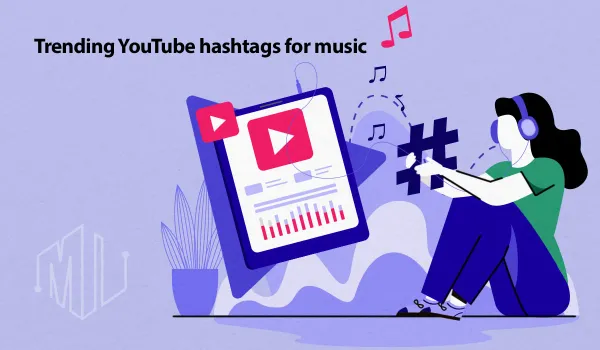How to Use LinkedIn Data for Superior Competitive Intelligence?
Learn why LinkedIn data is essential for competitive intelligence. Enhance market analysis and strategic decisions with valuable LinkedIn insights.

In today’s competitive business world, having an edge over your rivals is essential. One powerful tool that can help you achieve this is LinkedIn. With over 700 million professionals using the platform, LinkedIn is more than just a place to network—it's a treasure trove of valuable data.
By tapping into LinkedIn data, you can gain insights into market trends, competitor activities, customer preferences, and industry developments. In this blog, we'll show you how to use LinkedIn data for superior competitive intelligence.
Whether you're a business owner, marketer, or just curious about the market, these tips will help you turn LinkedIn information into actionable insights to keep your business ahead of the competition.
✨ Unleash the Power of AI with MagicalAPI!
Whether you’re optimizing YouTube content, extracting LinkedIn data, or evaluating resumes, MagicalAPI is your one-stop solution! Discover the diverse range of AI services tailored to meet your every need. Dive in and elevate your digital experience today!

What is LinkedIn Data and Why Is It Important for Competitive Intelligence?"
Importance of LinkedIn Data
LinkedIn data is essential for competitive intelligence because it provides insights into competitor strategies, industry trends, and market opportunities.
By examining metrics such as follower growth, engagement rates, and content strategies from competitors’ LinkedIn pages, businesses can benchmark their own performance and identify areas needing improvement.
This analysis helps companies adjust their strategies to stay competitive in their industries.
Types of Data Available on LinkedIn
LinkedIn offers a wide range of data useful for competitive analysis, including detailed insights on company pages, engagement metrics, and content performance.
Businesses can track how competitors use hashtags, monitor their posting frequency, and analyze the types of content that generate significant engagement.
Additionally, LinkedIn’s advanced search features and analytics tools, such as LinkedIn Page Analytics and Sales Navigator, provide comprehensive data for comparing and understanding market dynamics.
Key Benefits of Using LinkedIn for Competitive Intelligence
- Real-Time Insights
LinkedIn's real-time analytics allow businesses to make smart decisions by using new trends and reacting quickly to market changes. This access to up-to-date data helps companies stay flexible and adapt swiftly to consumer demands and operational challenges. - Market Trend Analysis
LinkedIn shows companies trends in workforce and labor markets, helping them understand global economic changes. - Competitor Benchmarking
LinkedIn enables effective competitor benchmarking by allowing businesses to track and compare their performance against competitors using metrics like follower growth and content engagement. - Identifying Trends
Look at the data for patterns and trends. Are certain types of content getting more attention? Are there new topics in your industry gaining popularity? Use these insights to guide your content strategy and stay ahead of industry trends.
How to Effectively Collect and Analyze LinkedIn Data
To effectively collect and analyze LinkedIn data, Businesses can use tools and techniques to make things easier and meet legal standards. Here's a simple breakdown of the steps:
Optimizing Your LinkedIn Profile
Make sure your LinkedIn profile is professional and current to build credibility. Use a clear, professional photo and a headline that includes relevant industry terms or expertise.
Regularly update your summary and projects to reflect your latest skills and experiences. Also, stay active by sharing relevant industry content, participating in groups, and connecting with professionals in your field. This boosts your visibility and establishes you as a leader in your industry.
Utilizing LinkedIn Tools and Features
- LinkedIn Sales Navigator:
This tool provides advanced search capabilities, lead recommendations, and real-time insights. It allows you to target specific companies and industries, view detailed company profiles, and save leads for future reference. Use it to identify key decision-makers and track competitor activities. - LinkedIn API:
For more technical users, the LinkedIn API provides access to a wider array of data. It allows you to automate data collection and integrate LinkedIn data with other business intelligence tools. Ensure you understand and comply with LinkedIn’s API usage policies to avoid violations. - LinkedIn Page Analytics:
This feature provides insights into how well your company page is performing. It includes metrics like visitor demographics, engagement rates, and follower growth. Use this data to refine your content strategy and better understand your audience.
Data Extraction Techniques
- Ethical Web Scraping Tools: Tools like Profile Data and Company Data can automate the collection of data from LinkedIn profiles, posts, and company pages.
These tools can extract data efficiently and present it in a structured format for analysis. - Manual Data Collection: For smaller datasets or specific insights, manual data collection can be effective. Regularly review competitor profiles, monitor their posts, and track engagement manually. This hands-on approach can uncover nuances that automated tools might overlook.
Ensuring Compliance and Ethical Standards
Always ensure that your data collection methods comply with LinkedIn’s terms of service and privacy policies. Don't use unauthorized methods to extract data, as this could get you in trouble. Be clear about how you collect and use data, and always respect user privacy.

Implementing LinkedIn Intelligence in Business Strategy
Enhancing Marketing Strategies
Using LinkedIn intelligence can significantly improve marketing efforts. By understanding your audience better, you can create more engaging content and target your campaigns more effectively.
Advanced tools on LinkedIn allow you to analyze large amounts of data, helping you understand what your audience cares about. This lets you create personalized marketing campaigns that speak directly to your customers' interests and needs, leading to better customer interaction and satisfaction.
Informing Product Development
LinkedIn provides valuable insights that can guide product development. By analyzing data on customer preferences and industry trends, businesses can develop products that meet specific market needs.
This means you can innovate confidently, knowing your products will appeal to your target audience. For instance, if you see a growing trend for eco-friendly products in your industry, you can prioritize developing sustainable products to meet this demand.
Strengthening Sales Approaches
LinkedIn intelligence can greatly refine your sales strategies. By understanding customer behavior and market dynamics, your sales team can better plan and manage their efforts.
Insights from LinkedIn can help you optimize everything from territory planning to managing your sales pipeline.
This ensures your sales strategies are closely aligned with customer needs and market demands, making your sales efforts more effective and targeted.
By integrating LinkedIn intelligence into these key areas, businesses can make more informed decisions, improve their strategies, and maintain a competitive edge in their industry.
Conclusion
Exploring LinkedIn data highlights its crucial role in competitive intelligence, helping businesses navigate market complexities and stay competitive. By using LinkedIn for competitor analysis and strategic insights, companies can enhance decision-making and strategic planning.
LinkedIn is more than a networking platform; it's a powerful tool for refining marketing strategies, informing product development, and strengthening sales approaches.
The strategic use of LinkedIn significantly boosts a company's competitive edge. Businesses should integrate LinkedIn data strategies into their tactics.
As competitive intelligence evolves, LinkedIn remains essential for companies aiming to lead in their industry. Leveraging LinkedIn's data is vital for thriving in today's dynamic market.
FAQ
- What are the key ways to gather competitive intelligence on LinkedIn?
LinkedIn is a powerful tool for competitive intelligence through its vast professional network and content sharing features. You can start by connecting with competitors, customers, and prospects to observe their network expansions and movements. Monitoring the content published by competitors, including articles and posts, provides insights into their strategies and market positioning. - How can LinkedIn's Talent Insights be utilized for competitive intelligence?
LinkedIn Talent Insights offers robust data through Talent Pool and Company reports. These reports can help you analyze competitor growth rates, attrition rates, and hiring patterns. Additionally, you can discover the most sought-after skills and roles, which helps in benchmarking your company's performance against competitors and identifying areas for improvement. - What types of data on LinkedIn are most valuable for competitive intelligence?
Valuable data types include employee profiles, company updates, job postings, and content shared by executives. Employee profiles can reveal the skills and experiences that competitors value, while company updates and job postings provide insights into new initiatives and areas of growth. Content shared by executives can shed light on the company's strategic direction and thought leadership.

Join to our community
By joining our Discord server, get assistance, and troubleshoot any challenges you may encounter while using our services.
Join us on Discord




